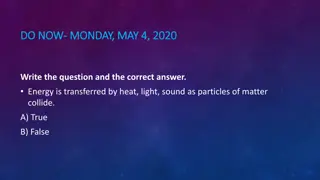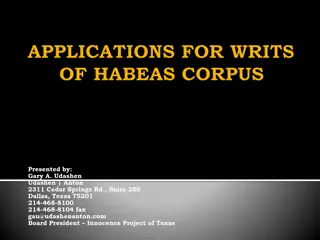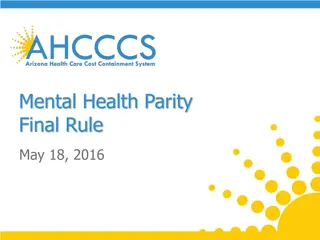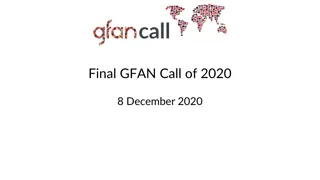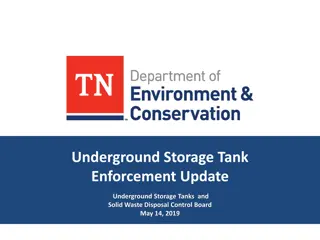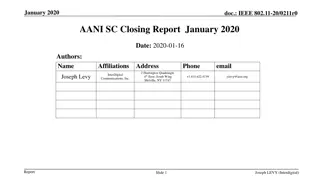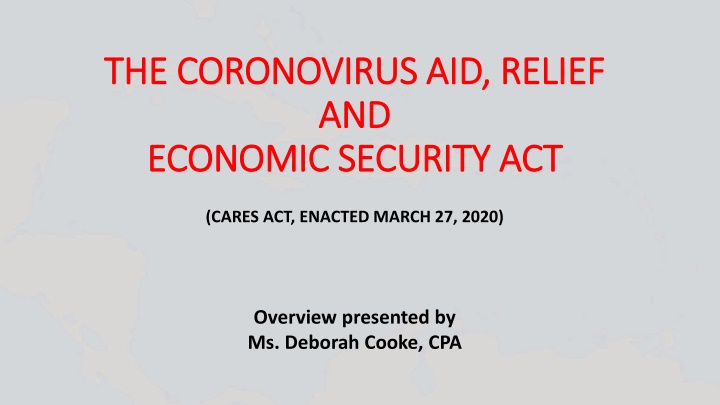
Highlights of the CARES Act: Economic Impact Payments & Relief
Learn about the Economic Impact Payments authorized by the CARES Act, including eligibility criteria based on adjusted gross income, filing status, and more. Find out who is eligible, who is not, and how to claim your payment if you don't typically file taxes. Additional information on automatic payments for certain groups like SSDI beneficiaries is also provided.
Download Presentation

Please find below an Image/Link to download the presentation.
The content on the website is provided AS IS for your information and personal use only. It may not be sold, licensed, or shared on other websites without obtaining consent from the author. If you encounter any issues during the download, it is possible that the publisher has removed the file from their server.
You are allowed to download the files provided on this website for personal or commercial use, subject to the condition that they are used lawfully. All files are the property of their respective owners.
The content on the website is provided AS IS for your information and personal use only. It may not be sold, licensed, or shared on other websites without obtaining consent from the author.
E N D
Presentation Transcript
THE CORONOVIRUS AID, RELIEF THE CORONOVIRUS AID, RELIEF AND AND ECONOMIC SECURITY ACT ECONOMIC SECURITY ACT (CARES ACT, ENACTED MARCH 27, 2020) Overview presented by Ms. Deborah Cooke, CPA
CARES Act Highlights Individuals Business Economic Impact Payment (Stimulus Payment) New Employer Tax Credits U.S. Small Business Administration (SBA) Programs Pension Benefits Unemployment Benefits (MA) Furloughed Employees Self-Employed Individuals and Contract Employees
Economic Impact Payment (Stimulus Payment) Automatic for taxpayers who filed tax returns in 2018 and 2019 and most seniors and retirees. Eligibility: U.S. citizens and U.S. resident aliens will receive the payment of $1,200 for individual or head of household filers, and $2,400 for married filing jointly if they are not a dependent of another taxpayer and have a work eligible Social Security number with adjusted gross income up to: o $75,000 for individuals if their filing status was single or married filing separately o $112,500 for head of household filers and o $150,000 for married couples filing joint returns Taxpayers will receive a reduced payment if their AGI is between: o $75,000 and $99,000 if their filing status was single or married filing separately o 112,500 and $136,500 for head of household o $150,000 and $198,000 if their filing status was married filing jointly Payment amount is reduced by $5 for each $100 above the $75,000/$112,500/$150,000 thresholds In addition, eligible individuals receive an additional $500 per qualifying child
Economic Impact Payment (Who is NOT eligible) Your adjusted gross income is greater than: o $99,000 if your filing status was single or married filing separately o $136,500 for head of household o $198,000 if your filing status was married filing jointly You can be claimed as a dependent on someone else s return. For example, this would include a child, student or older dependent who can be claimed on a parent s return You do not have a valid Social Security number You are a nonresident alien You filed Form 1040-NR or Form 1040NR-EZ, Form 1040-PR or Form 1040-SS for 2019
Economic Impact Payment (Other) Those who don t usually file a tax return and receive Social Security retirement, survivor, or disability benefits (SSDI), Railroad Retirement benefits, Supplemental Security Income (SSI) and VA Compensation and Pension (C&P) also receive automatic payments of $1,200. Individuals, such as low-income workers and certain veterans and individuals with disabilities who aren t required to file a tax return, may still be eligible for the Economic Impact Payments. Taxpayers can check the IRS.gov tool - Do I Need to File a Tax Return? to see if they have a filing requirement. If you don t have to file, use the "Non-Filers: Enter Payment Info Here" application on IRS.gov as soon as possible so you can get your payment. Individuals with a tax payment due to the IRS in 2018 or 2019 may still be entitled to the stimulus payment. Such individuals must check their status here, https://www.irs.gov/coronavirus/get-my- payment , and if, eligible, provide their bank information for direct deposit. FAQ: https://www.irs.gov/coronavirus/get-my-payment-frequently-asked-questions#elig
Tax-favored coronavirus-related distributions (CRD) from qualified retirement plans and IRAs Clients under age 59 can withdraw up to $100,000 from specified qualified retirement plans and IRAs during 2020 without a 10% early withdrawal additional federal income tax, if the individual meets coronavirus-related eligibility requirements (see below). The 20% mandatory federal income tax withholding is waived for coronavirus-related distributions (CRDs) from qualified retirement plans. Unless you elect otherwise, CRDs will be included in your income for federal income tax purposes ratably over 3 years. Note that state and local income taxes may not be subject to this delayed tax treatment. Consult your tax advisor for more information on your personal circumstances. ELIGIBLITY FOR CRD Certify that you, your spouse or dependent is diagnosed with COVID-19 (or SARS-CoV-2) or you experience certain adverse financial consequences as a result of (i) being quarantined, furloughed or laid off or having to work reduced hours because of the virus (or disease), (ii) being unable to work due to lack of child care because of the virus (or disease), (iii) closing or reducing hours of a business owned or operated by you due to the virus (or disease), or (iv) other factors as determined by the U.S. Department of Treasury.
Unemployment Benefits (MA) Apply for unemployment benefits during your first week of total or partial unemployment. The quickest way to file a successful unemployment claim is through the UI (Unemployment Insurance) online portal: https://uionline.detma.org/Claimant/Core/Login.ASPX A step by step guide on How to file a New Unemployment Claim in UI Online can be found here: https://www.mass.gov/doc/filing-a-new-unemployment-claim-covid-19/download Furloughed employees (temporary layoff): Workers who are temporarily unemployed due to lack of work because of COVID- 19 and expect to return to work will be eligible for unemployment benefits. If you work part time, you may still qualify for unemployment benefits. See https://www.mass.gov/service-details/working-part-time-while-receiving-unemployment-benefits Pandemic Unemployment Assistance (PUA) provides payment to workers not traditionally eligible for unemployment benefits (self-employed, independent contractors, etc )
Massachusetts Application For Pandemic Unemployment Assistance To apply you need: Social security number, date of birth, driver license or state ID, and, if you're not a US citizen, your USCIS Issued Identification number. Home address and your mailing address, if different than your home address. Cell phone to receive SMS updates and phone calls or home phone number. Email address for electronic communication and account access. 2019 wage records which may include your W2s, 1099s, K-1s related to partnerships, Pay Stubs, or Bank Statements. Bank account and routing numbers if you want to use direct deposits for benefit payments. https://ui-cares-act.mass.gov/PUA/_/?_ga=2.219226588.470951004.1588614305-1476746457.1588113356#3
COVID19 Tax Provisions: New Employer Tax Credits Credit for Sick and Family Leave An employee who is unable to work (including telework) because of coronavirus quarantine or self-quarantine or has coronavirus symptoms and is seeking a medical diagnosis, is entitled to paid sick leave for up to ten days (up to 80 hours) at the employee s regular rate of pay, or, if higher, the Federal minimum wage or any applicable State or local minimum wage, up to $511 per day, but no more than $5,110 in total. Eligible employers are entitled to receive a credit in the full amount of the required sick leave and family leave, plus related health plan expenses and the employer s share of Medicare tax on the leave, for the period of April 1, 2020, through December 31, 2020. The refundable credit is applied against certain employment taxes on wages paid to all employees. Employee Retention Credit Eligible employers can claim the employee retention credit, a refundable tax credit equal to 50 percent of up to $10,000 in qualified wages (including health plan expenses), paid after March 12, 2020 and before January 1, 2021. Eligible employers are those businesses with operations that have been partially or fully suspended due to governmental orders due to COVID-19, or businesses that have a significant decline in gross receipts compared to 2019. The refundable credit is capped at $5,000 per employee and applies against certain employment taxes on wages paid to all employees Note: Employer ineligible if receiving SBA Paycheck Protection Program loan
Payroll Tax Deferral Payment of applicable employment taxes for the payroll tax deferral period are deferred (effectively an interest-free loan from the government) Half due December 31, 2021 Half due December 31, 2022 Payroll tax deferral period The period beginning on March 27, 2020 and ending on December 31, 2020 Applicable employment taxes are generally the employer share of social security taxes Also includes corresponding taxes imposed under the Railroad Retirement Act and on employee representatives, where applicable Applicable with respect to 50% SECA social security taxes (estimated taxes will not apply) Deferring payment of 2020 payroll taxes also defers deductibility
COVID19 Small Business Loan Resources The Small Business Association (SBA) resumed accepting Paycheck Protection Program applications from participating lenders on Monday, April 27, 2020. The Paycheck Protection Program is a loan designed to provide a direct incentive for small businesses to keep their workers on the payroll. SBA will forgive loans if all employees are kept on the payroll for eight weeks (February 15 June 30) and the money is used for payroll, rent, mortgage interest, or utilities. One can apply through any existing SBA 7(a) lender or through any federally insured depository institution, federally insured credit union, and Farm Credit System institution that is participating. Other regulated lenders will be available to make these loans once they are approved and enrolled in the program. You should consult with your local lender as to whether it is participating in the program. SBA Website: https://www.sba.gov/funding-programs/loans/coronavirus-relief-options






